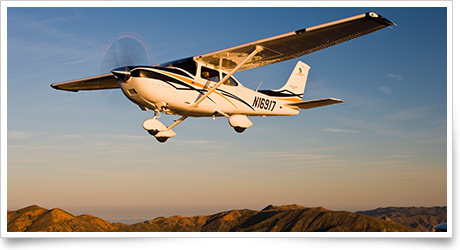| The following stories from the July 27, 2012, edition of AOPA ePilot were provided to AOPA members who expressed an interest in the particular subject areas. Any AOPA member can receive information tailored to their areas of interest by updating their preferences online. |
training tipsHedging the heat
Textbooks and performance charts do a fine job of explaining how temperatures well above standard lengthen takeoff runs, increase distance to clear obstacles, and erode your aircraft’s ability to climb to cruise altitude. You can quickly check your density-altitude knowledge before you launch by taking this Air Safety Institute quiz.
Seeing is believing—and summer’s performance penalties could even alter your method for exiting your airport’s local area. If that high hill a few miles away, or those new wind turbines on a nearby ridge, seem a bit harder to outclimb than usual—especially when turning toward them produces a tailwind component, increasing your groundspeed—you may want to devise a different departure plan.
Then add a solid safety factor to the new plan.
To deal safely with nonstandard conditions, be sure to calculate your aircraft's expected performance using the appropriate temperature values and correction factors. For example, when using the time, fuel, and distance-to-climb chart for a 1977 Cessna 150 Commuter, remember to comply with a note that increases time, fuel, and distance 10 percent for each 8 degrees Celsius above standard temperature. (Also review the airport’s characteristics and allow for any runway gradient.)
Hedge even more by planning as if conditions are even more adverse than you expect. For instance, when calculating expected takeoff performance, “conservative distances can be established by reading the chart at the next higher value of altitude and temperature,” advises the Cessna 150 pilot’s operating handbook.
Has it been a while since you examined your training aircraft’s paperwork? Has new equipment been installed recently? Check to see if the useful load is still the same as you have been assuming.
Inspect the baggage compartment and remove any unnecessary items. Accidents linked to reduced aircraft performance in high density-altitude conditions frequently follow attempts to fly a heavily loaded or overloaded aircraft.
Take a cue from veteran mountain pilots who face challenging flight scenarios even when airports in the flatlands have reverted to more normal operating conditions, as noted in the Air Safety Institute’s informative Mountain Flying Safety Advisor.
One tip is as simple as setting your alarm clock. “Experienced mountain pilots make it a point to fly early in the morning when the temperature is cooler,” the safety advisor says. training productsJeppesen offers aircraft-specific training toolsJeppesen has created a series of training packages specific to the aircraft in which you may be training. The Jeppesen Aircraft Total Training series features training guides and information for the Cessna 172, Diamond DA40, and Piper PA-44 Seminole. Each package includes printed as well as online materials arranged by phase of flight, and is customizable to a student's learning speed. Call 866/498-0213 toll-free or 303/328-4030 direct for prices and additional information.
Note: Products listed have not been evaluated by ePilot editors unless otherwise noted. AOPA assumes no responsibility for products or services listed or for claims or actions by manufacturers or vendors. final examQuestion: A friend asked me to be a safety pilot for him while he is doing some instrument training with a view limiting device. Can I do that for him in his Piper Arrow even if I don’t have a complex endorsement?
Answer: Yes, you can act as a safety pilot for your friend. FAR 91.109 Flight Instruction; Simulated instrument flight and certain flight tests require that a safety pilot occupy one of the control seats during simulated instrument flight. The safety pilot also must have at least a private pilot certificate with category and class ratings appropriate to the aircraft being flown. You have an airplane single-engine land rating, which is sufficient in this case.
Got a question for our technical services staff? Email [email protected] or call the Pilot Information Center, 800/872-2672. Don’t forget the online archive of “Final Exam” questions and answers, searchable by keyword or topic. |
 If summer’s heat wave has been on the march in your area, you have probably noticed its significant effects on your aircraft’s performance.
If summer’s heat wave has been on the march in your area, you have probably noticed its significant effects on your aircraft’s performance.

